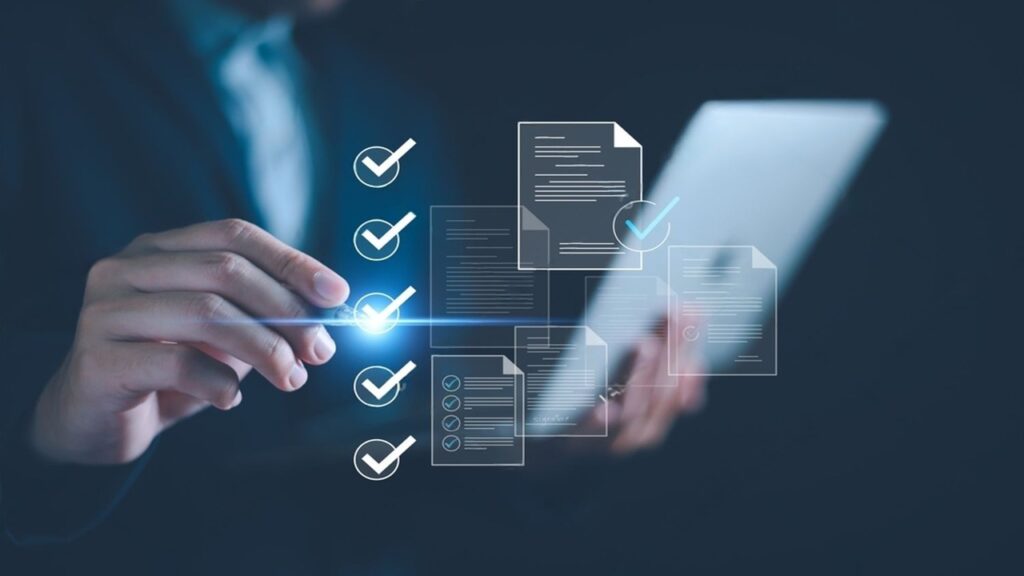
SDLC Phases give your project a map and a rhythm. With a clear sequence, teams plan well, move with purpose and deliver with fewer surprises. Without that structure, deadlines drift, people pull in different directions, and fixes pile up.
The System Development Life Cycle Phases solve that by turning a big goal into manageable work. From the first sketch to a stable release, each stage answers a simple question and hands off proof to the next.
In this guide, you will learn what the seven stages are, how they link, and how to apply the Software Development Life Cycle Steps on real projects. You will also see where risk hides and how the Phases of SDLC keep it small.
Table of Contents
ToggleWhat Are SDLC Phases
Think of SDLC Phases as a set of named stages that carry an idea from concept to a supported product. Each stage has a purpose, expected inputs, concrete activities and a usable output.
Because these boundaries are clear, your plan becomes visible and your progress becomes measurable.
The core System Development Life Cycle Phases are planning, requirement analysis, system design, development, testing, deployment and maintenance. Together they form a loop.
After release, you learn from users, return to planning, and repeat. That loop is why the Phases of Development Life Cycle work for both new builds and steady improvements.
Stat: Teams that follow consistent Phases of SDLC report fewer late defects and smoother handoffs, especially between development and testing.
Why the Phases of SDLC Matter
A method is not extra paperwork. It is a way to reduce uncertainty and align people around the same outcome.
1. Predictability
The Software Development Life Cycle Steps make dates and budgets credible. Managers know what comes next. Stakeholders know what proof to expect.
2. Quality control
Reviews and checks happen inside the flow, not after it. That keeps problems small.
3. Shared language
Designers, developers, testers and sponsors use the same names for the same steps. Misunderstandings drop.
Example: A bank builds a secure forms portal. By tracing features through the System Development Life Cycle Phases, the team shows auditors exactly where each requirement was tested and accepted.
4. Risk management
Each stage has a small set of risks. You can spot them early and plan a counter move.
5. Continuous improvement
Maintenance sends measured lessons back to planning. The product grows stronger every cycle.
PRO TIP: Treat the seven stages as a loop, not a line. When you release, schedule a short review, capture three lessons, and feed them into the next plan.
The 7 Key SDLC Phases
Below you will find what each stage does, what to produce and where teams often slip. Use it as a checklist you can lift into your project.
1. Planning
You define the problem, value, scope, budget, timeline and success measures. You also agree on who decides what. The outputs are a one-page charter, a draft roadmap and visible risks.
Study: A review of troubled projects showed weak planning near the top of root causes, especially unclear scope and missing owners. A clear charter shrinks that risk before code exists.
2. Requirement Analysis
You capture what the system must do and how you will prove it. Write user stories or use cases with acceptance criteria. Include non-functional needs such as speed, scale, security and privacy. These details include the next Software Development Life CycleSteps.
Pair each requirement with a tiny test someone can run. Clear checks make later stages faster.
3. System Design
You translate needs into structure. Draw the architecture, agree on data models, define interfaces, and sketch screens. The outputs are diagrams, interface contracts and a simple plan for testing and deploying. Because the Phases of Development Life Cycle link together, design also sets the shape of build and test.
4. Development
You build small slices and integrate often. Choose frameworks, write code and keep merged small. Add unit tests as you go. This is usually the longest of the System Development Life Cycle Phases, so discipline matters.
Example: An online store implements price rules first, with unit tests for tax and discount math. That protects revenue from subtle errors and makes later features safer.
5. Testing
You verify that behavior meets the spec and that quality holds under load. Run unit, integration, system, security and user acceptance tests. Track defects and fix them while the context is fresh. Exit with a short report that lists coverage and remaining risk.
6. Deployment
You launch the product. This can be a pilot, a staged rollout, or a full release. Use a runbook, monitor key signals and practice a rollback. When earlier SDLC Phases were solid, release feels calm, not chaotic.
7. Maintenance
You support users, patch issues, track performance and ship improvements. Logs, alerts, and a weekly review keep the product healthy. This stage closes the loop and starts the next cycle of the Phases of SDLC.
Table 1: Overview of the 7 SDLC Phases
| Phase | Key focus | Output produced |
| Planning | Define value, scope, and success | Charter, risks, roadmap |
| Requirement Analysis | Capture needs with checks | Requirement spec, acceptance criteria |
| System Design | Shape architecture and data | Diagrams, interface contracts, prototypes |
| Development | Build in small slices | Working code and unit tests |
| Testing | Verify behavior and quality | Test reports and fixes |
| Deployment | Release to users | Runbook, monitoring, live system |
| Maintenance | Keep the system healthy | Patches, updates, metrics |
How to Apply SDLC Phases in Practice
A framework helps only if it fits your day. This section gives a practical path you can follow.
Start with short documents
Keep the charter to one page. List of goals, scope, owners and success measures. Store it where everyone can see it.
Move through gates that take minutes
At the end of each stage, check three to five items and sign off. Small gates keep quality high without slowing you down.
Use tools that support the flow
A backlog tool for planning and analysis, diagram tools that live with the repo for design, version control and code review for build, and simple dashboards for test and deploy. When tools match the Software Development Life Cycle Steps, the process feels natural.
Involve real users early
Show a wireframe or a thin slice during design. Ask one clear question. Adjust before you sink cost into build.
Survey: Teams that demo early and often report better alignment with sponsors and fewer late scope changes, especially on consumer facing projects.
Common Challenges with SDLC Phases
Even with structure, teams hit snags. Knowing the common traps helps you avoid them.
Changing requirements
Scope moves as users learn. The fix is to loop through analysis and design quickly with updated checks. The Phases of SDLC expect that cycle.
Resource gaps
Skill or budget constraints slow work. Plan for a spike in planning to prove tricky parts early.
Over documentation
Long texts nobody reads waste time. Replace them with checklists, diagrams, and small examples linked to tests. The System Development Life Cycle Phases work best when proofs are short and close to the code.
Communication gaps
Handoffs drop context. Solve this with a shared space for decisions and with short notes that capture why a choice was made.
Example: A health project produced thick binders for design. The team switched to one diagram per service plus a short interface contract. Build sped up and testers found issues earlier because they could see the shape in one glance.
Future Trends in SDLC Phases
Methods evolve as tools mature, yet the core stages remain the same.
1. AI and automation
Models now assist with requirement capture, test case generation and risk flags. They reduce manual effort across the Software Development Life Cycle Steps while leaving ownership with the team.
2. DevOps alignment
Continuous integration and continuous delivery link build, test and deploy into a steady pipeline. That pipeline makes the Phases of Development Life Cycle faster without removing checks.
3. Hybrid models
Teams mix structured planning and design with iterative build and test. The result is a predictable plan that is still learning from users.
4. Cloud first operations
Cloud platforms simplify deployment and maintenance with managed services, which later makes System Development Life Cycle Phases lighter.
Traditional vs Modern Application of SDLC Phases
| Aspect | Traditional approach | Modern approach with automation |
| Requirement Analysis | Long documents | Small stories with living tests |
| Development | Few large merges | Many small merges with review |
| Testing | Manual passes late in the cycle | Automated checks on every commit |
| Deployment | Infrequent and manual | Frequent and scripted with checks |
| Maintenance | Reactive tickets | Proactive alerts and trend reviews |
Phase by Phase Checklists
Short checklists turn ideas into action. Use these as a definition of done for the seven SDLC Phases.
- Planning
Goal statement ready, scope clear, risks listed, timeline and roles agreed, charter stored in a shared space. - Requirement Analysis
User stories or use cases written with acceptance criteria, non-functional needs captured, compliance rules assigned to owners, traceability approach chosen. - System Design
Architecture and data diagrams reviewed, interface contracts drafted with example payloads, test and deploy plan noted, a prototype shown to users for a quick check. - Development
Coding standards documented, branch rules set, small merges and peer review running, unit tests written for new code, feature flags in place for risky parts. - Testing
Coverage targets set, unit and API and UI checks running, defects triaged with clear owners, exit report prepared. - Deployment
Runbook steps rehearsed, rollback tested in staging, monitoring configured, release note shared with sponsors and support. - Maintenance
Issue queue reviewed on a schedule, patch window set, performance trends tracked, lessons captured and sent back to planning.
Metrics that Matter
Measure less but make it count. Choose a few signals tied to the System Development Life Cycle Phases.
- Lead time from idea to live
- Defect trend by stage discovered
- Coverage on critical flows
- Time to restore after an incident
- Share of stories accepted on first pass
Roles and Handoffs Across SDLC Phases
Small teams wear many hats. Large teams split them. Either way, ownership must be clear.
- Product owner sets value and accepts work
- Analyst maintains the requirement list and checks
- Architect owns diagrams and non-functional targets
- Developer delivers code and unit tests
- Tester verifies behavior and publishes a short report
- Release engineer runs deploy and monitors health
- Support lead tracks incidents and publishes weekly summaries
Study: Programs that name a single decision owner reduce delays near release, since tough calls do not bounce between groups.
A One Week Pilot You Can Run Now
You can prove value fast by running a tiny cycle through the Software Development Life Cycle Steps.
- Day one set a goal, write a charter, pick one small feature
- Day two captured three user stories with acceptance checks
- Day three draw a simple diagram and an interface example
- Day four build a thin slice with a unit test
- Day five test the slice and fix one defect
- Day six deploy to staging with a runbook
- Day seven hold a review, record lessons and plan the next slice
Example: A team built a small search filter in a week using this pilot. Because the pieces were small and the checks were clear, they shipped with confidence and kept the pattern for the next features.
Final Thoughts
SDLC Phases turn complex goals into a series of clear, teachable steps. The seven stages of planning, requirement analysis, system design, development, testing, deployment and maintenance give your project a steady rhythm.
When you follow the System Development Life Cycle Phases, quality rises, risk falls, and delivery becomes predictable. The same is true when you apply the Phases of SDLC in Agile or in Waterfall. The pace changes, not the purpose. Keep artifacts light, roles clear and feedback tight.
With that approach, the Software Development Life Cycle Steps and the Phases of Development Life Cycle stop being paperwork and start being real leverage that helps every release land on time.


